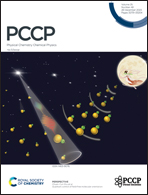Degradation of thermal stability and micromechanical properties of the C–S–H phase induced by ultra-confined water at elevated temperatures
Abstract
Water in the nanometer to micrometer-sized pores of calcium silicate hydrate (C–S–H) is essential for the binding process of cementitious materials. The quantity, location, and physical state of water in C–S–H pores under extreme conditions significantly influence the strength and durability of cementitious materials. The present study employed ReaxFF and molecular dynamics (MD) simulation to evaluate the effects of water ultra-confined in the nanopores on the structure, bonds, dynamics, and tensile mechanism of the C–S–H grains at elevated temperatures. The results indicate that the temperature elevation may interfere with the water molecule's hydrogen-bond network between the C–S–H grains, causing a notable nanometer-scale pore expansion. Simultaneously, the diffusion coefficient of water molecules confined in nanopores gradually increased, and their dynamic characteristics shifted from a glassy nature to free water. Additionally, high temperatures promoted hydrolysis reactions and the breakage of chemical bonds in the C–S–H framework, causing disintegration of the silicate skeleton and a decrease in the mechanical attributes of C–S–H. Moreover, the uniaxial tensile test at high temperatures revealed that the silicate chain groups in the C–S–H substrates underwent thermal curling. In contrast to interlayer-bound water, under the action of tension, water molecules in nanopores are viscous, forming water layers.



 Please wait while we load your content...
Please wait while we load your content...